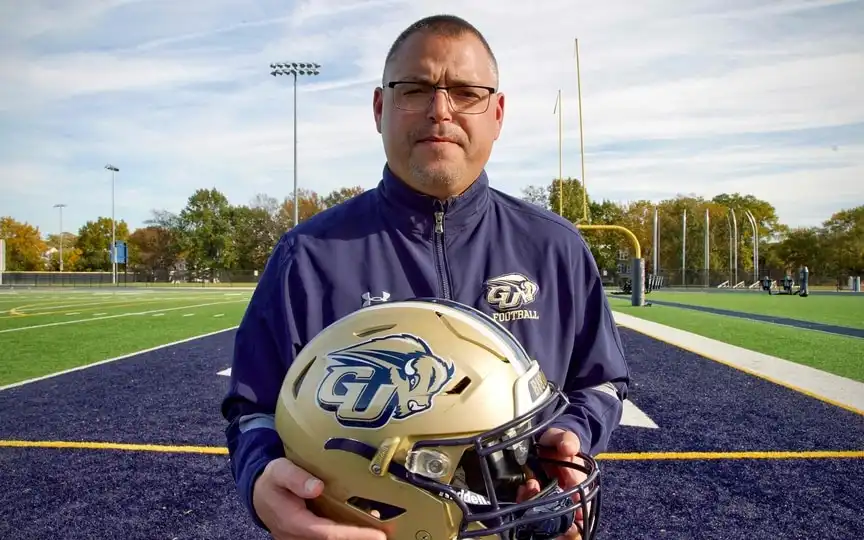Innovative Helmet Offers Hope to Deaf Football Players
AFP spoke with Coach Chuck Goldstein, who frequently finds himself leaping on the sidelines of the field, attempting unsuccessfully to capture the attention of his players. This is due to the fact that nearly all members of the Gallaudet University American football team in Washington are either deaf or hard of hearing. Goldstein emphasizes the importance of eye contact, stating that if players are not looking at the coaching staff, they will not receive the necessary instructions.
That’s what makes the helmet Goldstein is holding revolutionary: it’s equipped with an augmented reality eyepiece that can show play calls to the team on the field.
“We communicate quickly, like every other team in the country, but the difference is our players, they don’t hear the whistles,” sometimes leading to penalties, Goldstein says.
“It’s never fair.”
But now the possibilities are “endless”.
– Sign of the times –
Founded in 1864, Gallaudet is still one of the nation’s premier schools for the deaf.
Its football team also has an illustrious place in American football history.
They are credited with inventing the sport’s iconic huddle in an 1894 game against another deaf team to prevent them from understanding their game. This is a special opportunity to communicate openly in ASL (American Sign Language).
Experimental helmets might just be the university’s next communication effort in sports.
Developed by telecommunications giant AT&T, they mostly look like classic football helmets: a hard-shell exterior, a grilled face mask, and a bison mascot logo on the side.
In addition, a clear plastic lens that hangs over one eye.
Coaches send game calls from the sidelines via a tablet.
“It allows deaf and hard-of-hearing athletes to see play calls as quickly as opponents can hear them,” said Andrew Bennett, AT&T’s vice president of mass market 5G products.
There is also a special alarm system.
“If I need to get the quarterback’s attention, I have a red button. And it’s like an exclamation point,” Goldstein says.
“It just flashes” on the lens.
The display system eases the burden on players who, without their coach yelling at them, would otherwise be forced to watch the sidelines.
It also brings them closer to the practices used by the National Football League, which have long allowed for helmet-to-helmet radio communications from coaches to players — which have yet to be implemented in college football.
– Trial and error –
The helmet came about after a back-and-forth between several Gallaudet players and AT&T, quarterback Brandon Washington recalls.
“The first time I wore a helmet, I really didn’t like it because it was really big in the back,” he says.
“The early version had a bulky, heavy battery, which was modified based on player suggestions,” said Bennett.
The lens also drew close attention. The glass could have broken on impact, so plastic has been used.
The biggest question now is how far the helmets are allowed to go: The governing body for college athletics, the NCAA, only authorized its use for one game earlier this season.
During that game, the new technique worked well, coach Goldstein says: “It was effortless, it was smooth.”
Gallaudet’s team is now campaigning to have the authorization extended through next season.
The university plans to meet with the NCAA in the near future.
But Goldstein is already looking ahead – and not just to deaf or hard-of-hearing players.
“What if the NFL or other leagues adopted this technology?”
One more thing! ReturnByte is now on WhatsApp channels! Click here to join so that you never miss any updates from the world of technology.




